Taking your dog for a walk should be an enjoyable bonding experience, but if your furry friend insists on dragging you down the sidewalk, it can quickly turn into a frustrating tug-of-war. Thankfully, there are plenty of strategies you can implement to transform your daily walks into a more harmonious adventure. From understanding the psychology behind your dog’s behavior to applying practical training techniques, here are 14 clever ways to stop your dog from pulling on the leash.
1. Buy the Right Equipment

Choosing the right leash and harness can make a world of difference in managing your dog’s pulling. A no-pull harness is designed to gently steer your dog back toward you, reducing their ability to lunge forward. This type of equipment can help redistribute pressure evenly across your dog’s body, making it more comfortable. Additionally, a longer leash allows more freedom while still maintaining control.
According to a study published in the Journal of Veterinary Behavior, dogs walked with front-clip harnesses showed markedly less pulling behavior than those walked with rear-clip harnesses. The study emphasizes the importance of using equipment that promotes better weight distribution and reduces strain on your dog’s neck. By investing in the right tools, you can set the stage for more manageable and pleasant walks for both you and your pet.
2. Implement Positive Reinforcement
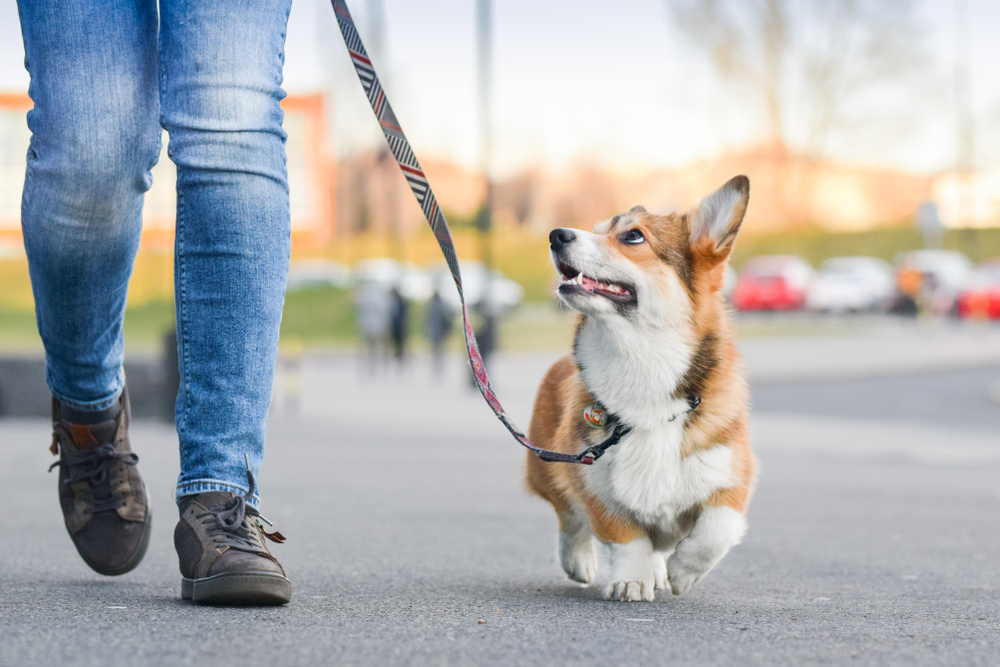
Positive reinforcement is a powerful method for encouraging desired behavior in dogs. When your dog walks nicely beside you, rewarding them with a treat or verbal praise can reinforce this good behavior. The goal is to make the act of walking beside you more appealing than pulling ahead. Consistency and patience are key; over time, your dog will learn that staying close leads to rewards.
It’s essential to be observant and reward your dog at the right moments. Timing is crucial—praise and treats should be given immediately when your dog exhibits the desired behavior. This helps your dog make the connection between the behavior and the reward. By maintaining a consistent reinforcement schedule, your dog will be more likely to repeat the good behavior.
3. Practice the Stop-and-Go Technique

The stop-and-go technique is an effective way to teach your dog that pulling won’t get them to their destination any faster. If your dog begins to pull, stop walking immediately. Wait until the leash slackens and your dog returns to your side before resuming the walk. This teaches your dog that pulling results in no progress, while staying close means forward movement.
Dr. Sophia Yin, a renowned veterinarian and animal behaviorist, advocates for this technique as part of a broader training regimen. Her studies show that dogs trained with consistent stop-and-go techniques learn to walk with a loose leash more quickly than those trained with less structured methods. By incorporating this technique into your walks, you’re communicating that cooperation leads to rewards.
4. Keep Walks Interesting
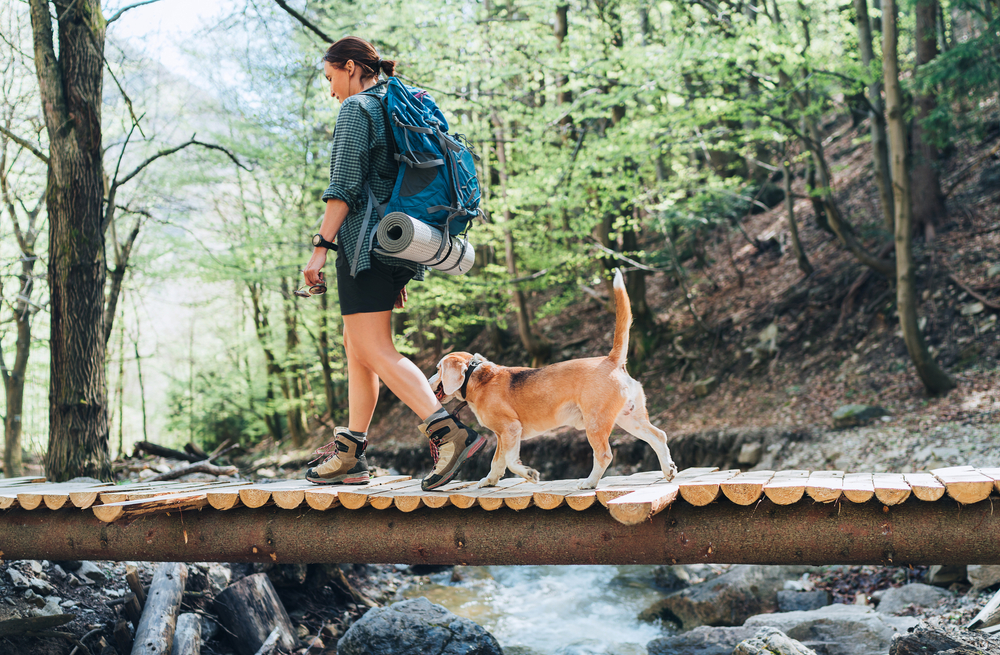
Keeping your walks interesting can help distract your dog from the urge to pull. Vary your route to expose your dog to new sights and smells, making the journey more engaging. You can also incorporate play and training exercises during the walk to keep your dog’s focus on you. By maintaining your dog’s interest, you can reduce their inclination to pull toward distractions.
Recognizing your dog’s need for mental stimulation is key in managing leash behavior. A change of scenery can alleviate boredom and make walks more enjoyable for both of you. Interactive elements like stopping to play fetch or practicing a few tricks can also shift their focus back to you. This tactical engagement can transform your walks into a fun and dynamic experience.
5. Teach the “Heel” Command

Teaching your dog the “heel” command can provide a clear direction for walking calmly beside you. Start by rewarding your dog for walking by your side before introducing the command. Gradually increase the duration and distraction levels, reinforcing successful behavior with treats and praise. Over time, your dog will associate the “heel” command with staying close to you during walks.
The American Kennel Club emphasizes the importance of consistent training sessions to cement the “heel” command. They recommend short, frequent training sessions that gradually build up to longer durations. This approach helps your dog grasp the concept without becoming overwhelmed. By mastering this command, you can enjoy a more controlled and pleasant walking experience.
6. Address Underlying Behavioral Issues
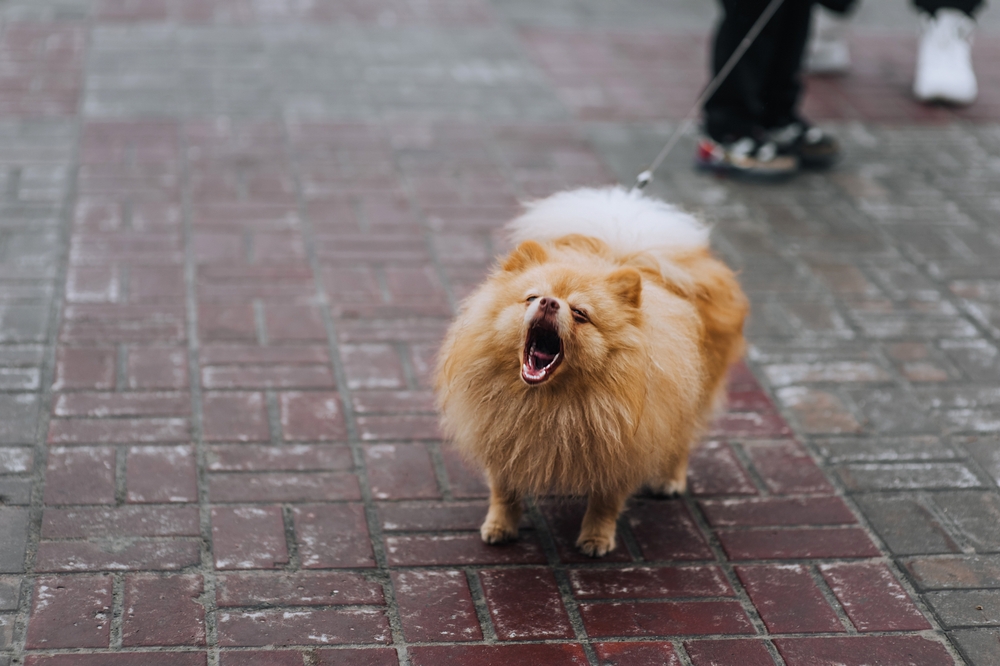
Sometimes, a dog’s tendency to pull may be symptomatic of underlying behavioral issues. Excessive energy, anxiety, or a lack of proper socialization can contribute to leash pulling. Identifying and addressing these root causes can be more effective than treating the symptom alone. Consider consulting a professional trainer or behaviorist if you suspect deeper issues.
An individualized approach may uncover specific triggers or fears that lead to pulling. Addressing these can involve a combination of increased exercise, anxiety management, and gradual exposure to new environments. By tackling the root of the problem, you can significantly reduce your dog’s urge to pull. A balanced and happy dog is more likely to exhibit calm leash behavior.
7. Incorporate Clicker Training

Clicker training is an effective way to communicate with your dog during walks. By using a clicker to mark the moment your dog exhibits desired behavior, you can reinforce positive actions with precision. Pair the clicking sound with a treat to create a strong association between the behavior and the reward. Over time, your dog will understand that walking nicely beside you results in positive reinforcement.
According to Karen Pryor, a pioneer in clicker training, this method leverages a dog’s ability to learn through association. Her research shows that clicker training can accelerate learning processes, as the distinct sound serves as a clear marker of good behavior. Implementing this technique can provide a structured framework for teaching your dog how to walk calmly. The clicker acts as an immediate signal that helps bridge the communication gap between you and your furry friend.
8. Gradually Increase Distractions

Training your dog to walk nicely on a leash doesn’t stop once they can do so in a quiet area. Gradually increasing distractions can help them maintain good behavior in various environments. Start in a calm setting and slowly introduce new stimuli, like other dogs or busy streets, as your dog becomes more comfortable. This gradual exposure builds confidence and resilience in your dog’s behavior.
As your dog becomes accustomed to different environments, their ability to handle distractions improves. This process requires patience, as too many stimuli too soon can overwhelm your dog. However, by pacing the introduction of new environments, you can build your dog’s capacity to remain focused on you. This adaptability will pay off in real-world scenarios where distractions are inevitable.
9. Shorten the Leash
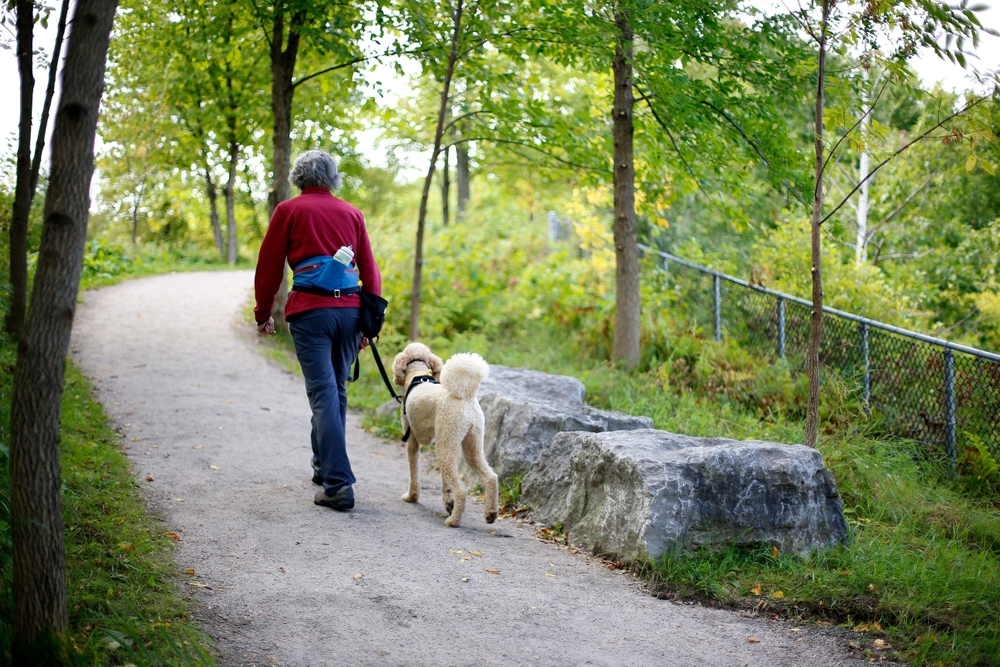
Sometimes, a shorter leash can help maintain control over your dog’s movements. A shorter leash limits your dog’s ability to gain momentum, encouraging them to stay closer to you. This can be particularly useful in crowded or high-distraction areas. A shorter leash also provides a better sense of connection and communication between you and your dog.
However, it’s important to ensure your dog still has enough freedom to feel comfortable. Striking a balance between control and freedom is key to a pleasant walking experience. By adjusting the leash length as necessary, you can respond to different environments and your dog’s behavior. This flexibility helps reinforce the idea that walking calmly by your side is a desirable behavior.
10. Keep Your Energy and Emotions In Check

Dogs are incredibly perceptive and can pick up on your energy and emotions. If you’re tense or anxious, your dog may mirror those feelings, leading to more pulling. Before heading out for a walk, take a moment to relax and set a calm, confident tone. Your dog will be more likely to follow your lead if you project a sense of calm leadership.
Recognizing your emotional state is a crucial part of effective dog training. Your dog relies on you for cues about how to react to the world. By maintaining a steady and relaxed demeanor, you help instill a sense of security in your dog. This emotional mirroring can greatly influence your dog’s behavior and contribute to a more harmonious walk.
11. Have a Treat Pouch

Having a treat pouch at the ready can make the reinforcement process smoother and more efficient. With treats easily accessible, you can reward your dog quickly when they exhibit good leash behavior. The immediacy of the reward helps reinforce the connection between walking calmly and receiving praise. This convenience also allows you to focus more on the walk itself, rather than fumbling for treats.
A treat pouch can also serve as a visual cue for your dog, signaling that rewards are available for good behavior. Over time, this can motivate your dog to stay close and pay attention to you. Having a system in place for reward delivery ensures consistency in training. This consistency builds trust and understanding between you and your dog, strengthening your walking partnership.
12. Create a Consistent Routine

Establishing a consistent walking routine can help set clear expectations for your dog. Dogs thrive on routine, and knowing what to expect can reduce anxiety and excitement levels that lead to pulling. Try to walk at the same times each day and follow a similar route initially. Over time, this routine will become familiar, and your dog will be more inclined to follow your lead.
Consistency doesn’t mean rigidity, though. Once your dog is comfortable with the routine, you can gradually introduce new routes and walking times. This flexibility keeps the experience fresh while maintaining a sense of structure. Creating a balance between routine and variety helps your dog remain adaptable while feeling secure.
13. Limit the Use of Retractable Leashes
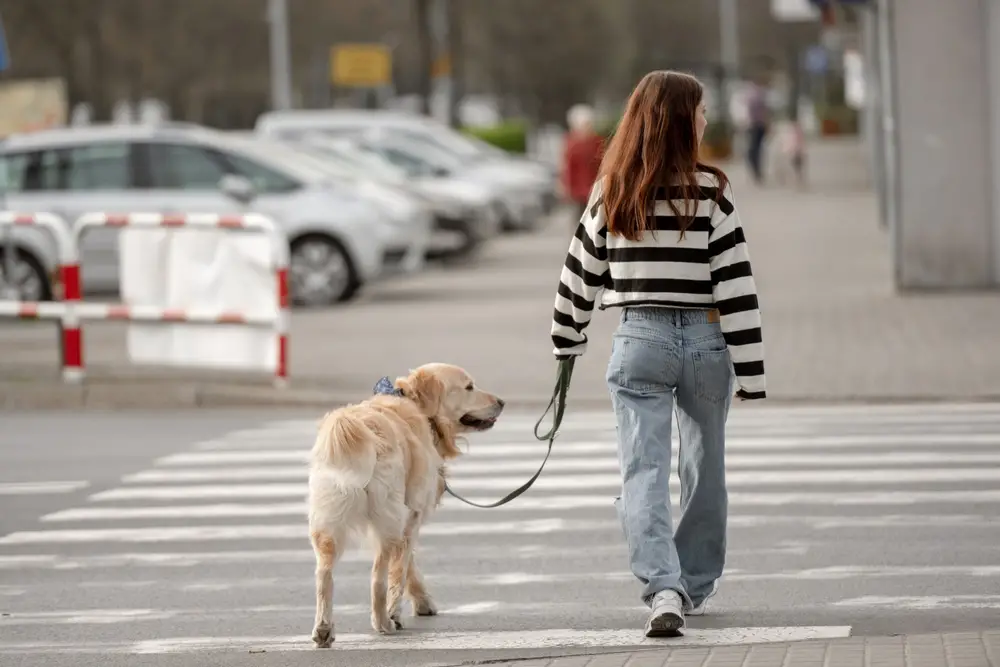
Although convenient, retractable leashes can encourage pulling by teaching your dog that tugging results in more freedom. These leashes can give your dog too much control, leading to inconsistent leash behavior. Instead, opt for a standard leash that provides clearer boundaries. This choice promotes better leash manners and enables more effective communication.
Retractable leashes also pose safety risks in crowded or high-traffic areas. The sudden freedom can lead to unpredictable behavior, making it harder to manage your dog. By opting for a regular leash, you maintain better control and reduce the chances of unexpected incidents. This decision supports a safer and more structured walking environment.
14. Be Patient and Persistent

Training your dog to walk nicely on a leash is a process that requires patience and persistence. Progress may be slow at times, but consistency will yield results. Celebrate small victories and remain committed to reinforcing positive behavior. Over time, your dog will learn to walk calmly beside you, making walks a more enjoyable experience for both of you.
Understanding that setbacks are part of the learning process can help you stay motivated. Every dog learns at their own pace, and what works for one may not work for another. However, by remaining dedicated to the training process, you build a foundation of trust and communication. This perseverance ultimately leads to a well-behaved walking partner and strengthens your bond.
